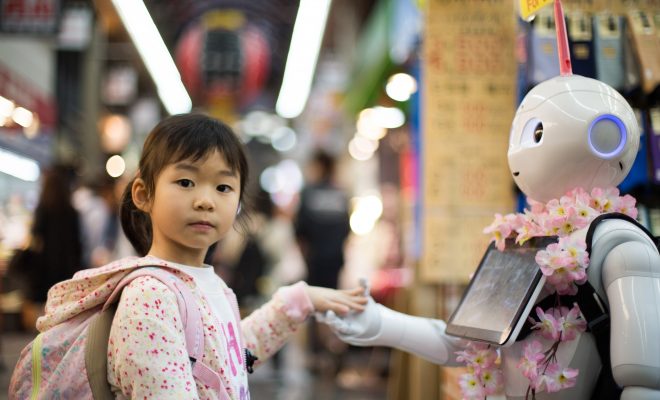What Happens When You Use Artificial Intelligence in PBL

The teacher at the front of the room began his lecture half an hour ago, and he shows no signs of letting up. As he talks, he occasionally turns to write an equation on the board.
“When will we ever use this?” the disengaged students ask.
Next door, however, student groups have identified a real-world problem affecting the community. Teams of students are researching, exploring and using artificial intelligence to arrive at a solution. The equations they use bring them one step closer to finding the answer they need.
By incorporating AI in Project Based Learning, students have the opportunity to apply concepts immediately rather than wonder about their usefulness after class has ended.
Get students involved from the beginning
Seattle-based Renton Prep is already doing all of this, having explored what artificial intelligence could bring to learning experiences. Executive Director Michelle Zimmerman recognized the importance of coding early on, and her school began teaching coding basics. She also knew she wanted something more for her students. She wanted to challenge and engage the learners at her school. Artificial intelligence provided both.
AI brings diverse implications and immense potential for application. It’s almost impossible to predict the scope and impact that artificial intelligence will have on the future. As it turned out, learning how to code was just the beginning. Students at Renton Prep also explore ethical implications while experiencing AI in a variety of subject areas and fields.
Renton’s AI lessons call for design thinking and problem-solving as students engage with project-based learning. Together, AI and PBL seem like a match made in heaven.
What works best in AI-based PBL projects
Artificial intelligence has changed the learning landscape in many classrooms. Figuring out how to create and design demands self-directed learning opportunities. Project-based lessons encourage the kind of thinking and collaboration necessary for working with AI.
To create engaged teams of learners in the classroom, include these takeaways:
Interdisciplinary projects
Students seldom remember lessons taught in isolation. They are far more likely to retain learning if it connects across multiple disciplines. When the brain has a chance to connect to new information many times and in different ways, the knowledge is more likely to become deeply embedded in memory.
Flexibility
Learning is about being curious and taking risks. Allow students the opportunity to make mistakes and recover from them as part of the learning process. Provide sufficient time for exploration, discovery, and reflection.
A focus on capacity
AI is changing the focus on what’s important. Acquiring a lot of knowledge is no longer enough. Our students today have the knowledge of the world at their fingertips. They must know how and when to apply it, ethically and legally.
In addition to creating interdisciplinary projects, remaining flexible, and building capacity, there’s one more thing you can do in the classroom. Encourage students to work with others from diverse backgrounds. Exposure to different ways of approaching a problem can be eye-opening for students.
Incorporating AI in Project Based Learning will position your students as life-long learners that can problem solve in a modern world.






